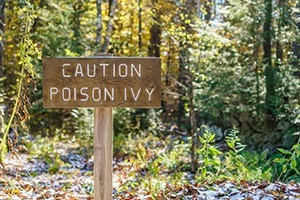Poisonous Plant Awareness

Poison ivy has a characteristic three-leaf (“leaves of three, leave them be”) pattern of growth. Its green leaves turn reddish in the spring, and yellow, orange, or red in the fall. A poison ivy shrub may have white berries.
Poison oak is most common west of the Rocky Mountains and looks similar to poison ivy. The difference is that the leaves of this plant are ridged or lobed and are close in appearance to oak leaves. Poison sumac has thin, narrow leaves in sets of seven to thirteen but is far less common than poison ivy or oak.
The best way for workers to protect themselves against these plants is by being observant of the plant life around and vigilant in avoiding these areas. Outdoor itch relief and prevention products can also help. Supervisors and veteran workers should show new staff members how to spot the dangerous plants.
If contact is made, most commercial-grade soap will remove the urushiol that causes the characteristic rash and blisters. It’s also important to use cold water to remove the oil, as hot water can open your pores and let the oils in faster.
Furthermore, any clothes that might carry the oil need to be cleaned thoroughly as well. The oil can linger for years on objects that have not been properly washed, so it is important to be thorough with any materials that came into contact with the plants.
There are some over-the-counter creams and oils that can act as a barrier, capable of preventing the oil from affecting the skin if they're applied before a worker touches the plant. Cleansers are also available that can help remove the toxic oil before the rash develops, but only if used soon enough after touching these plants.
Featured Products
As low as $3.29



